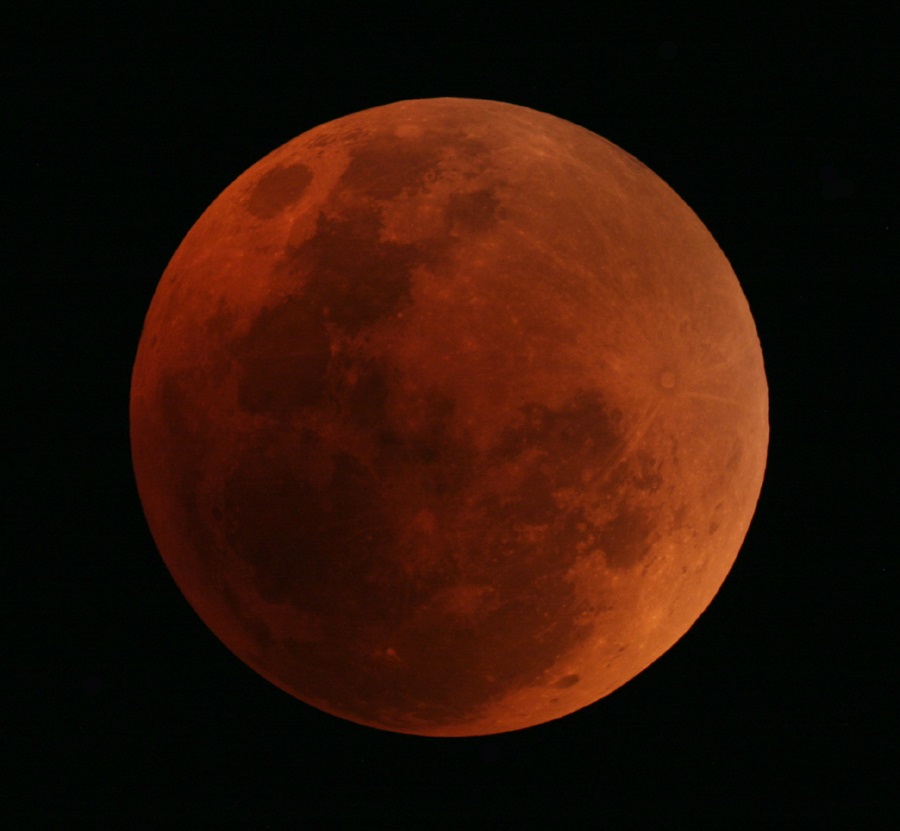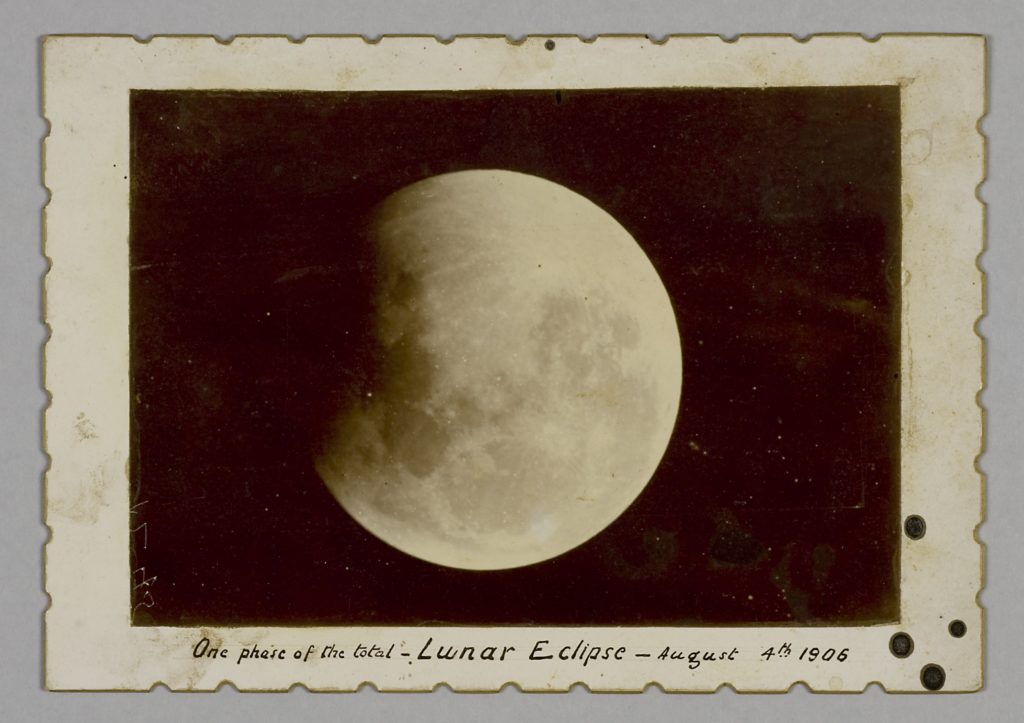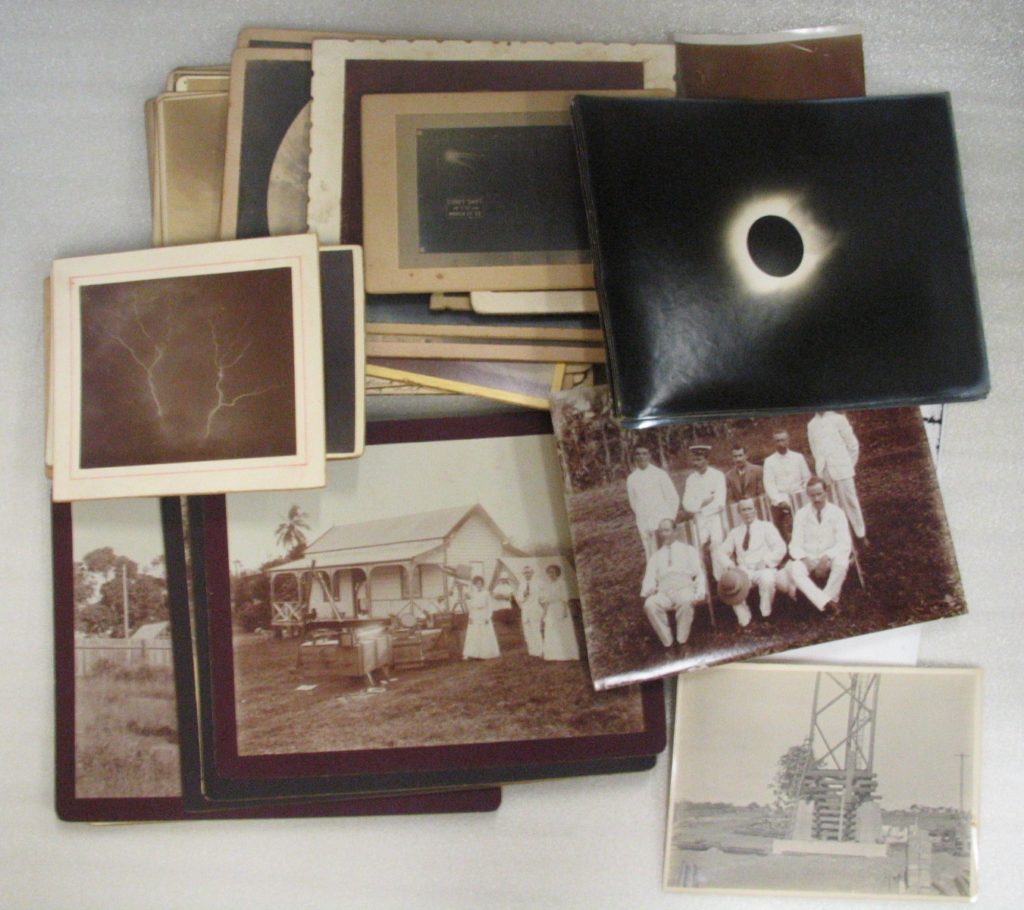
On Wednesday 31 January, 2018, Australia and New Zealand will experience a total lunar eclipse. This occurs when the moon moves completely into the Earth’s shadow, blocking out the Sun’s light, and plunging the moon into darkness. When the moon is completely eclipsed, it turns a reddish colour – often referred to as the ‘blood moon’. This is caused by light from the Sun refracting (bending) around the Earth as it passes through our atmosphere, and being directed onto the moon. Just like at sunrise or sunset, the light that has passed through the atmosphere is red in colour, resulting in this strange and beautiful red moon.
Wednesday’s eclipse also happens to fall during a ‘blue moon’ – the second of two full moons in one calendar month – making it quite rare and special indeed. You can read all about the eclipse – what causes it, what you’ll see, and how best to observe – on the Sydney Observatory blog (here and here). But while Sydney waits to see whether the currently cloudy sky will clear in time, we thought we’d take a look back at this incredible photograph of a lunar eclipse taken in 1906.

The eclipse seen in the photograph occurred on 4th August, 1906. The eclipse began 8:13pm that night, and the photograph captures the moon as it begins to enter the Earth’s shadow. Like Wednesday’s event, the 1906 one was a total lunar eclipse, complete with blood red moon. The moon would have been fully eclipsed for about 1 hour and 40 minutes, from 10:09pm to 11:50pm, reaching maximum eclipse at exactly 11:00pm, and finally coming to an end on 5th August at 01:47am. This week’s eclipse will be a similarly late-night event – beginning late on Wednesday night and finishing in the early hours of Thursday morning. The Time and Date website includes a cool animation of what the 1906 eclipse would have looked like, along with maps showing where it was visible.

This photograph forms part of a large collection taken or used by James Short, who was in charge of the astrographic telescope at Sydney Observatory’s Red Hill Branch from 1890 until his retirement in 1930. Short made many important contributions to the work of the Observatory, while his turbulent relationships with the various Government Astronomers add colour to the Observatory’s history. The photographs in this collection include images of the Pennant Hills Observatory grounds and telescopes, astronomical activities at Sydney Observatory, expeditions to Tahiti and Goondiwindi to view solar eclipses from those locations (featured in an earlier blog post), and comets and other astronomical objects seen from the Observatory. Together, these photographs help document the work of early Astronomers in NSW.
For those in NSW the eclipse will begin at 10:48pm (AEDT) and the moon will be fully eclipsed from 11:51pm to 01:08am. The eclipse ends at 02:12am when the moon leaves the Earth’s shadow. Sydney Observatory will be holding a special late-night event for the eclipse. Tickets available here.
Written by Sarah Reeves, Assistant Curator, with thanks to Andrew Jacob for facts and information about this week’s eclipse.
